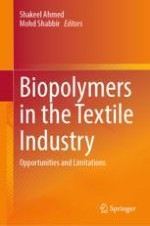2024 | OriginalPaper | Buchkapitel
Properties and Performance of Biopolymers in Textile Applications
verfasst von : Kazi Rezwan Hossain, Sharmin Akter, Muntajena Nanjeba, Md Arif Mahmud
Erschienen in: Biopolymers in the Textile Industry
Verlag: Springer Nature Singapore
Aktivieren Sie unsere intelligente Suche, um passende Fachinhalte oder Patente zu finden.
Wählen Sie Textabschnitte aus um mit Künstlicher Intelligenz passenden Patente zu finden. powered by
Markieren Sie Textabschnitte, um KI-gestützt weitere passende Inhalte zu finden. powered by
